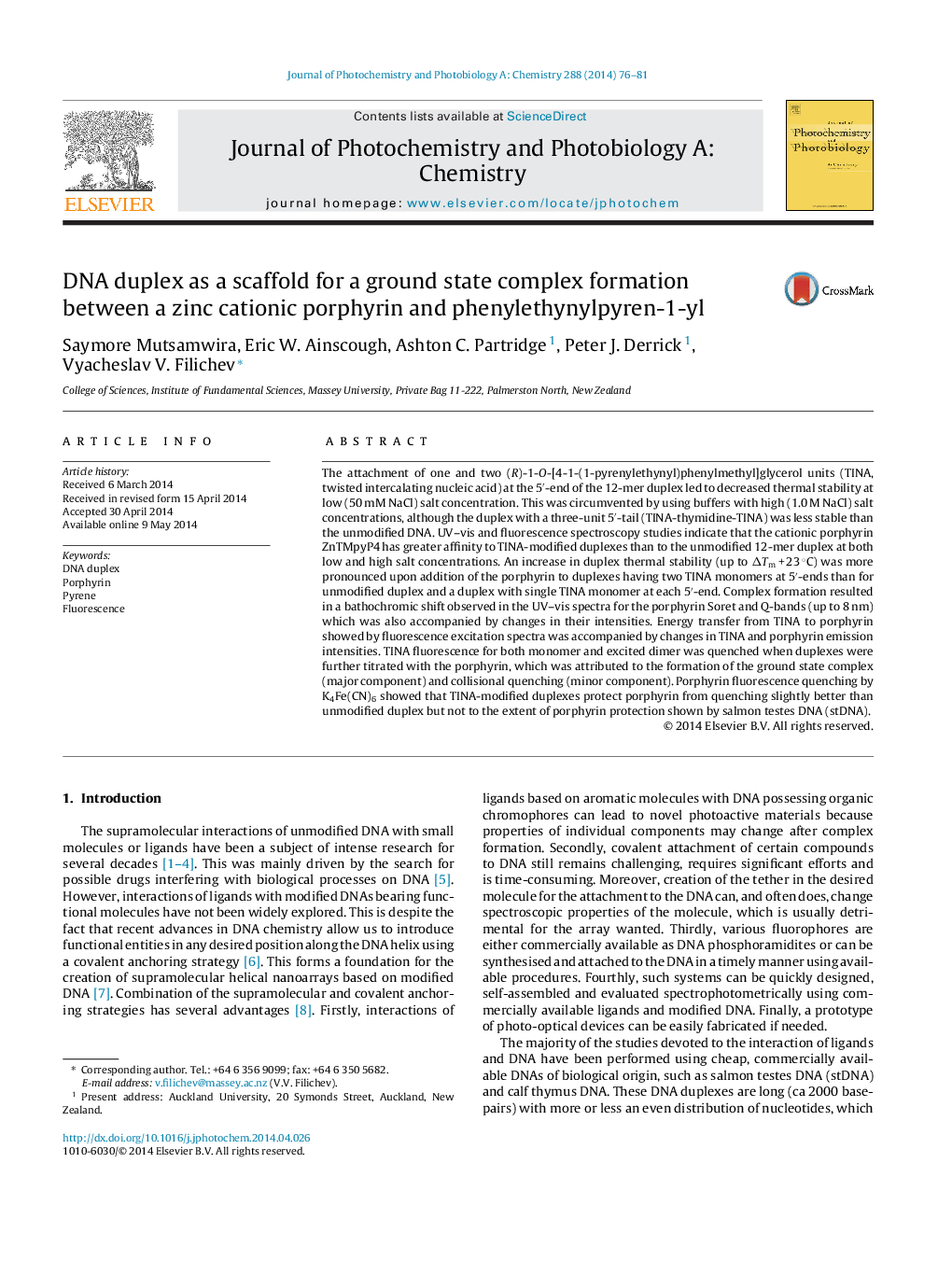| کد مقاله | کد نشریه | سال انتشار | مقاله انگلیسی | نسخه تمام متن |
|---|---|---|---|---|
| 26546 | 43961 | 2014 | 6 صفحه PDF | دانلود رایگان |

• A zinc cationic porphyrin forms a ground state complex with pyrene modified DNA.
• Complex formation is dependent on salt concentration and number of pyrene-units.
• Energy transfer is detected from phenylethynylpyrene to porphyrin.
• Both monomer and excimer fluorescence of pyrene are quenched by the porphyrin.
The attachment of one and two (R)-1-O-[4-1-(1-pyrenylethynyl)phenylmethyl]glycerol units (TINA, twisted intercalating nucleic acid) at the 5′-end of the 12-mer duplex led to decreased thermal stability at low (50 mM NaCl) salt concentration. This was circumvented by using buffers with high (1.0 M NaCl) salt concentrations, although the duplex with a three-unit 5′-tail (TINA-thymidine-TINA) was less stable than the unmodified DNA. UV–vis and fluorescence spectroscopy studies indicate that the cationic porphyrin ZnTMpyP4 has greater affinity to TINA-modified duplexes than to the unmodified 12-mer duplex at both low and high salt concentrations. An increase in duplex thermal stability (up to ΔTm + 23 °C) was more pronounced upon addition of the porphyrin to duplexes having two TINA monomers at 5′-ends than for unmodified duplex and a duplex with single TINA monomer at each 5′-end. Complex formation resulted in a bathochromic shift observed in the UV–vis spectra for the porphyrin Soret and Q-bands (up to 8 nm) which was also accompanied by changes in their intensities. Energy transfer from TINA to porphyrin showed by fluorescence excitation spectra was accompanied by changes in TINA and porphyrin emission intensities. TINA fluorescence for both monomer and excited dimer was quenched when duplexes were further titrated with the porphyrin, which was attributed to the formation of the ground state complex (major component) and collisional quenching (minor component). Porphyrin fluorescence quenching by K4Fe(CN)6 showed that TINA-modified duplexes protect porphyrin from quenching slightly better than unmodified duplex but not to the extent of porphyrin protection shown by salmon testes DNA (stDNA).
Figure optionsDownload as PowerPoint slide
Journal: Journal of Photochemistry and Photobiology A: Chemistry - Volume 288, 15 August 2014, Pages 76–81